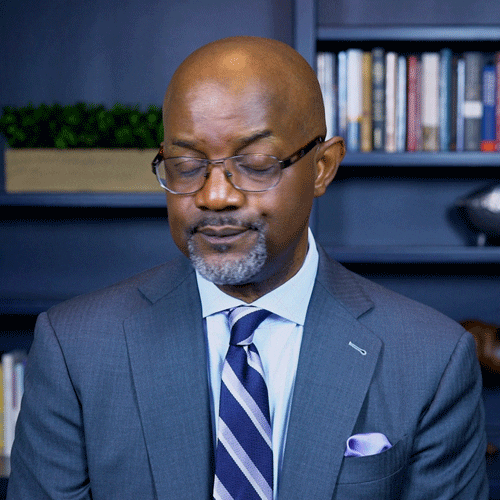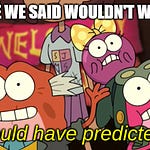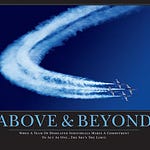I have a really feisty draft in response question I was asked last month:
“What’s the one piece of leadership advice you have here in this ‘new era’ of living and learning?”
It’s probably not fair that the question cranked me up so much, so I’m going to reserve THAT spicy piece for the introduction to my probably-never-published book called D-BAD: A Leadership Model for the New Era. D-BAD is my acronym for all of the leadership science because it simply boils down to Don’t be a D**k1.
But I want to talk a little bit about a recent article in MIT Sloan that explains what some researchers learned about what employees need during times of high uncertainty because it relates to D-BAD2.
Lots of industries are facing serious existential threats (what I’d frame as huge opportunities, really), and those dynamics can create serious instability at all levels, including right down to the individual.
The authors of this particular study, Powers and Diaz, share information that corroborates lots of what we already know about leadership during times of instability, but it bears mentioning again because my answer to the “one piece of advice for the new era” question is literally the advice I always give:
Just do what we know is right based on our decades of study, in times of crisis and otherwise.
Part of that is D-BAD, but another part of it is to recognize that in times of high uncertainty (like after three full years of a global pandemic and amid the shifting of the ground beneath our feet), brains are literally marinating in cortisol.
If you haven’t read Neuroscience for Organizational Change by Hilary Scarlett, go do that. If you think you know how change works — if you think you know how brains work — and you haven’t read this book, go now and do that.
Here’s a huge mistake leaders make during times of instability (and I blame some of the past literature on change for this, tbh, and maybe I’ll unpack that another time):
They often focus on threat and deficiency instead of security and opportunity.
They think that articulating all of the looming threats — many of which employees cannot mitigate individually — will create a sense of urgency that drives people toward innovation (ahem, the literature I mentioned earlier).
Y’all.
Y’all.
That is the exact wrong idea because brains under siege cannot think creatively. They cannot innovate. They cannot collaborate. They cannot self-regulate. The best they can do is find the lowest possible rung that will mitigate the discomfort, a rung that I guarantee is not the best or most strategic answer in the long term.
When I first started researching org change, I had a fascinating conversation with an engineer who worked for a firm facing some existential threats. He reported that the CEO brought the entire firm together and said, look. I will guarantee that every person sitting here today will still be in their seats a year from now.
But we have these problems that require creative, innovative solutions, and I want to set you loose on them. Here’s where we are, and here’s where we want to be. I trust that you have the skills and knowledge to figure this out.
Ultimately, they ended up exceeding all of their benchmarks by 20%. I asked him why he thought that was, and his answer was “security.” People were not operating under the threat of job loss and could therefore devote their bandwidth to creative problem solving.
Friends, let me tell you something. This is not news. We know this from the literature, and this recent study here from Powers and Diaz also underscores it. What do employees need during times of uncertainty?
They need to know they can trust leaders, and they need clear, consistent communication.
Both of these things reduce threat, create fertile ground for problem solving, and drive innovation.
The specific mechanisms for achieving both trust and clear communication are beyond the scope of this piece, though I assure you that they serve as central architecture for my D-BAD framework. Maybe one day we’ll talk more about that.
For now, let me release you from threat: If you’re faced with leaders who frame the situation at your organization with threat, don’t listen. Seriously! Redirect your mind, focus on reducing your own cortisol in your brain through any kind of mindfulness that works for you, breathe deeply, and focus your energy on strength and opportunity.
(And a job search, maybe.)
Especially in higher education, you might face this situation constantly. It’s captured here in this quote from The Chronicle in an article about younger faculty and their work relationship realignment3:
A professor at a regional university in the Midwest, whom I’ll call Dr. Tallmadge, told me, “Recruitment and retention is all anyone talks about anymore.” (Tallmadge and the other unnamed source in this article insisted on anonymity to speak openly about their current workplaces.) Tallmadge’s institution lost 20 percent of its students during the pandemic years. He says he would be willing to support retention efforts if there were clear tasks associated with that part of the work, but there aren’t. “It feels hopeless,” he told me, “and I don’t know what I can do to change it.”
So if you’re confronted with messages that we need to change and higher ed is facing threats ABCXYZ that aren’t followed up with a clear plan for mitigating all that, tune out. Otherwise, you’ll compromise your own health and well-being, I promise you.
Leaders, during this time — especially — it’s on you to create a spirit of hope, optimism, motivation, and excitement (in a positive way!). We need positive future focus, supportive environments, and an extra dose of clarity in our organizational environments.
And then let’s see what happens. My hypothesis is that organizations that capitalize on strength and engage full offense will be in fine shape in five years.
Everyone else?
We shall see.
Deliberately ambiguous here, but not in my mind. You wanna think I mean dork? Fine. Sure. Duck? Also fine. I honor whatever frame of reference you bring to this conversation but mine is wholly driven by my position as the daughter of a steel worker, just saying.
That’s the answer to the question, btw. What’s my one piece of advice? D-BAD. My probably-never-published book would unpack what that actually means because the second D in the acronym is crucial and bears definition because we definitely do not have a shared definition of what that actually means and how that actually looks.
What I’d call good boundary setting. I was struck that someone in the article was called “brave” for setting boundaries. I get it, but wow. Higher ed culture is something.













Leadership for the New Era: What's the one piece of advice?